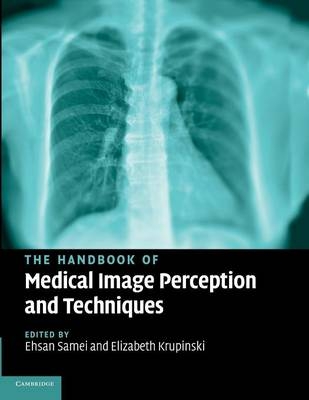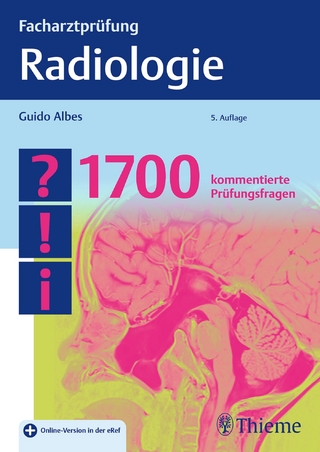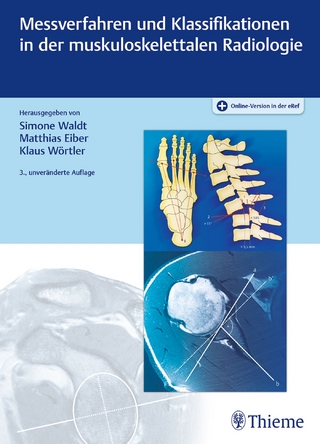
The Handbook of Medical Image Perception and Techniques
Cambridge University Press (Verlag)
978-1-107-42463-0 (ISBN)
This state-of-the-art book reviews key issues and methods in medical image perception research through associated techniques, illustrations and examples. Written by key figures in the field, the book covers a range of topics including the history of medical image perception research, the basics of vision and cognition, and dedicated application areas, especially those concerned with the interface between the clinician and the display of medical image data. It summarises many of the basic techniques used to conduct and analyse medical image perception and observer performance research, allowing readers to understand basic research techniques so they can adopt them for use in their own studies. Written for both newcomers to the field and experienced researchers, this book provides a broad overview of medical image perception, and will serve as a reference volume for years to come.
Ehsan Samei is a Professor of Radiology, Biomedical Engineering, and Physics at Duke University where he serves as the Director of the Duke Advanced Imaging Laboratories (DAI Labs) and the Directory of Graduate Studies for Medical Physics. His current interests include medical image formation, analysis, display, and perception, with particular focus on quantitative and molecular imaging. Elizabeth Krupinski is a Research Professor at the University of Arizona in the Departments of Radiology, Psychology and Public Health. She is the Associate Director of Evaluation and Assessment for the Arizona Telemedicine Program, President of the Medical Image Perception Society and serves on the editorial boards of a number of journals in both radiology and telemedicine.
1. Medical image perception Ehsan Samei and Elizabeth Krupinski; Part I. Historical Reflections and Theoretical Foundations: 2. A short history of image perception in medical radiology Harold Kundel and Calvin Nodine; 3. Spatial vision research without noise Arthur Burgess; 4. Signal detection theory, a brief history Arthur Burgess; 5. Signal detection in radiology Arthur Burgess; 6. Lessons from dinners with the giants of modern image science Robert Wagner; Part II. Science of Image Perception: 7. Perceptual factors in reading medical images Elizabeth Krupinski; 8. Cognitive factors in reading medical images David Manning; 9. Satisfaction of search in traditional radiographic imaging Kevin Berbaum, Edmund Franken, Robert Caldwell and Kevin Schartz; 10. The role of expertise in radiologic image interpretation Calvin Nodine and Claudia Mello-Thoms; 11. A primer of image quality and its perceptual relevance Robert Saunders and Ehsan Samei; 12. Beyond the limitations of human vision Maria Petrou; Part III. Perception Metrology: 13. Logistical issues in designing perception experiments Ehsan Samei and Xiang Li; 14. ROC analysis: basic concepts and practical applications Georgia Tourassi; 15. Multi-reader ROC Steve Hillis; 16. Recent developments in FROC methodology Dev Chakraborty; 17. Observer models as a surrogate to perception experiments Craig Abbey and Miguel Eckstein; 18. Implementation of observer models Matthew Kupinski; Part IV. Decision Support and Computer Aided Detection: 19. CAD: an image perception perspective Maryellen Giger and Weijie Chen; 20. Common designs of CAD studies Yulei Jiang; 21. Perceptual effect of CAD in reading chest images Matthew Freedman and Teresa Osicka; 22. Perceptual issues in mammography and CAD Michael Ulissey; 23. How perceptual factors affect the use and accuracy of CAD for interpretation of CT images Ronald Summers; 24. CAD: risks and benefits for radiologists' decisions Eugenio Alberdi, Andrey Povyakalo, Lorenzo Strigini and Peter Ayton; Part V. Optimization and Practical Issues: 25. Optimization of 2D and 3D radiographic systems Jeff Siewerdson; 26. Applications of AFC methodology in optimization of CT imaging systems Kent Ogden and Walter Huda; 27. Perceptual issues in reading mammograms Margarita Zuley; 28. Perceptual optimization of display processing techniques Richard Van Metter; 29. Optimization of display systems Elizabeth Krupinski and Hans Roehrig; 30. Ergonomic radiologist workplaces in the PACS environment Carl Zylack; Part VI. Epilogue: 31. Future prospects of medical image perception Ehsan Samei and Elizabeth Krupinski; Index.
| Verlagsort | Cambridge |
|---|---|
| Sprache | englisch |
| Maße | 216 x 279 mm |
| Gewicht | 1010 g |
| Themenwelt | Geisteswissenschaften ► Psychologie |
| Medizinische Fachgebiete ► Radiologie / Bildgebende Verfahren ► Radiologie | |
| Naturwissenschaften ► Physik / Astronomie ► Angewandte Physik | |
| Veterinärmedizin ► Klinische Fächer ► Bildgebende Verfahren | |
| ISBN-10 | 1-107-42463-1 / 1107424631 |
| ISBN-13 | 978-1-107-42463-0 / 9781107424630 |
| Zustand | Neuware |
| Haben Sie eine Frage zum Produkt? |
aus dem Bereich


